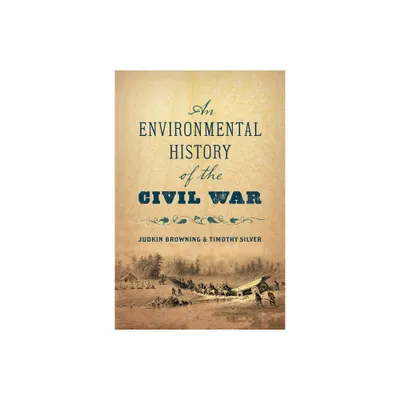Home
America's Buried History: Landmines the Civil War
Loading Inventory...
Barnes and Noble
America's Buried History: Landmines the Civil War
Current price: $29.95


Barnes and Noble
America's Buried History: Landmines the Civil War
Current price: $29.95
Loading Inventory...
Size: Hardcover
*Product Information may vary - to confirm product availability, pricing, and additional information please contact Barnes and Noble
Despite all that has been published on the American Civil War, one aspect that has never received the in-depth attention it deserves is the widespread use of landmines across the Confederacy. These “infernal devices” dealt death and injury in nearly every Confederate state and influenced the course of the war. Kenneth R. Rutherford rectifies this oversight with
America’s Buried History: Landmines in the Civil War
, the first book devoted to a comprehensive analysis and history of the fascinating and important topic.Modern landmines were used for the first time in history on a widespread basis during the Civil War when the Confederacy, in desperate need of an innovative technology to overcome significant deficits in materiel and manpower, employed them. The first American to die from a victim-activated landmine was on the Virginia Peninsula in early 1862 during the siege of Yorktown. Their use set off explosive debates inside the Confederate government and within the ranks of the army over the ethics of using “weapons that wait.” As Confederate fortunes dimmed, leveraging low-cost weapons like landmines became acceptable and even desirable.The controversial weapon was the brainchild of Confederate General Gabriel J. Rains (who had experimented with explosive booby traps in Florida two decades earlier during the Seminole Wars, and other Confederates soldiers developed a sundry of landmine varieties, including command-controlled and victim-activated. The devices saw extensive use in Virginia, at Port Hudson in Louisiana, in Georgia, the Trans-Mississippi Theater, during the closing weeks of the war in the Carolinas, and in harbors and rivers in multiple states. Debates over the ethics of using mine warfare did not end in 1865, and are still being waged to this day.Dr. Rutherford, who is known worldwide for his work in the landmine discipline, and who himself lost his legs to a mine in Africa, relies on a host of primary and secondary research to demonstrate how and why the mines were built, how and where they were deployed, the effects of their use, and the reactions of those who suffered from their deadly blasts.
America’s Buried History
is an important contribution to the literature on one of the most fundamental, contentious, and significant modern conventional weapons. According to some estimates, by the early 1990s landmines were responsible for more than 26,000 deaths each year worldwide.Landmines, argues Dr. Rutherford, transitioned from “tools of cowards” and “offenses against democracy and civilized warfare” to an accepted form of warfare until the early 1990s. The genesis of this acceptance began during the American Civil War.
America’s Buried History: Landmines in the Civil War
, the first book devoted to a comprehensive analysis and history of the fascinating and important topic.Modern landmines were used for the first time in history on a widespread basis during the Civil War when the Confederacy, in desperate need of an innovative technology to overcome significant deficits in materiel and manpower, employed them. The first American to die from a victim-activated landmine was on the Virginia Peninsula in early 1862 during the siege of Yorktown. Their use set off explosive debates inside the Confederate government and within the ranks of the army over the ethics of using “weapons that wait.” As Confederate fortunes dimmed, leveraging low-cost weapons like landmines became acceptable and even desirable.The controversial weapon was the brainchild of Confederate General Gabriel J. Rains (who had experimented with explosive booby traps in Florida two decades earlier during the Seminole Wars, and other Confederates soldiers developed a sundry of landmine varieties, including command-controlled and victim-activated. The devices saw extensive use in Virginia, at Port Hudson in Louisiana, in Georgia, the Trans-Mississippi Theater, during the closing weeks of the war in the Carolinas, and in harbors and rivers in multiple states. Debates over the ethics of using mine warfare did not end in 1865, and are still being waged to this day.Dr. Rutherford, who is known worldwide for his work in the landmine discipline, and who himself lost his legs to a mine in Africa, relies on a host of primary and secondary research to demonstrate how and why the mines were built, how and where they were deployed, the effects of their use, and the reactions of those who suffered from their deadly blasts.
America’s Buried History
is an important contribution to the literature on one of the most fundamental, contentious, and significant modern conventional weapons. According to some estimates, by the early 1990s landmines were responsible for more than 26,000 deaths each year worldwide.Landmines, argues Dr. Rutherford, transitioned from “tools of cowards” and “offenses against democracy and civilized warfare” to an accepted form of warfare until the early 1990s. The genesis of this acceptance began during the American Civil War.


















